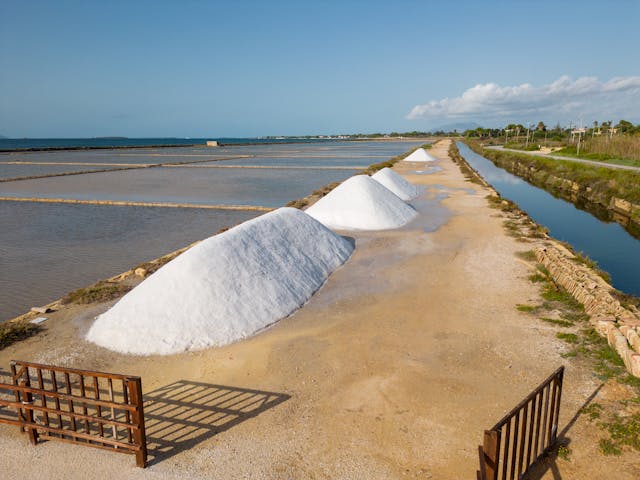For millennia, salt—often dubbed “White Gold”—has been a foundational pillar of human civilization, not merely as a culinary seasoning but as an indispensable industrial input. In the dynamic economic landscape of East Africa, the Kenyan salt sector presents a remarkably stable and profitable investment opportunity, shielded by strong regional export demand and essential industrial use.
In this comprehensive guide you will understand the Kenyan salt production ecosystem, its investment costs, profitability matrix, and the regulatory environment shaping its future.
1. The Salt Market in Africa, Market Drivers and Demand
The salt market in Africa is a critical component of the continent’s industrial and economic framework, characterized by diverse production and expanding domestic and international demand. Globally, the salt market is projected to see strong growth, with a compound annual growth rate (CAGR) expected to reach 7.8% by 2029. This growth is fundamentally driven by four major factors:
1.1 Industrial Applications
While household consumption is a stable base, the primary demand surge comes from non-food industries:
- Chemical Manufacturing: This is the most significant consumer of industrial-grade salt (sodium chloride). It is the essential raw material for producing chlorine, caustic soda, and soda ash, which are vital components for detergents, textiles, paper, and glass manufacturing.
- Food Processing and Preservation: Salt remains paramount for food preservation, curing, and seasoning in the rapidly urbanizing African food industry.
- Water Treatment: Salt is extensively used for water softening and purification processes, especially through reverse osmosis systems, crucial for addressing water scarcity.
- Agriculture and Livestock: Industrial salt is an essential additive in animal feed and fertilizer production.
1.2 Exporting
Kenya is strategically positioned to dominate the East African regional market. The country is a net exporter of salt, shipping $38.9 million worth of salt in 2023, compared to $5.24 million in imports.
The primary destinations for Kenyan-produced salt are its landlocked neighbours, who rely heavily on imported bulk salt. In 2023, the main export markets included Uganda ($19.3M), Tanzania ($8.11M), and Rwanda ($6.76M). Since landlocked countries like Uganda often face higher costs (averaging around $60 per ton) due to transportation, Kenyan producers, leveraging proximity and logistics chains, gain a competitive edge.
2. Best Salt Production Companies in Kenya
Salt production in Kenya predominantly occurs along the coast, harnessing the abundant sunshine and vast tidal flats. The industry is defined by the solar evaporation method and is led by a few major players.
2.1 Key Producers and Market Leaders
While there are over 800 suppliers and exporters of salt from Kenya, the manufacturing landscape is dominated by a few established names:
- Kensalt Limited: Recognized as a leading supplier, Kensalt is a major player in Kenya’s exports. The company has previously attributed price increases to the continuous rise in the cost of production, highlighting the capital-intensive nature of the business.
- Krystalline Salt Limited (Kaysalt): A prominent Mombasa-based manufacturer involved in large-scale production.
- Malindi Salt Works Ltd: Another significant coastal producer exporting refined iodated salt.
- Melvin Marsh International: Noted for innovation, this company produces refined, free-flowing salt, emphasizing product quality and market differentiation.
2.2 Best salt Production Method -Solar Evaporation
The most common and economically viable method of salt extraction in Kenya is the Solar Evaporation Process. This involves channeling seawater (brine) into a series of massive, shallow ponds where the sun and wind naturally evaporate the water, leaving behind concentrated salt crystals.
The process flow typically involves several key unit operations:
- Seawater Intake
- Evaporation Ponds: Where brine concentration increases.
- Crystallization Ponds: Where the salt precipitates out.
- Harvesting: Mechanized collection of salt crystals.
- Washing and Drying: To improve purity.
- Refining/Packaging: Final processing to create various grades (table, industrial, iodated).
3. Is Salt Production in Kenya Profitable?
The short answer is yes, the salt sector offers significant profitability, often yielding a high Return on Investment (ROI) for operations established at scale. It is often described as generating “colossal profits” for investors.
3.1 Revenue and Pricing Dynamics
Salt pricing is largely dependent on the grade, purity, and destination market.
| Product Grade | Typical African Price Range (Per Ton) | Kenyan Export Markets (Example) | Key Drivers |
| Industrial Grade | $30 – $50 | Used primarily for chemical and manufacturing inputs. | Volume, Purity, Contractual terms. |
| Table/Refined Salt | Higher retail prices (varies widely). | Domestic and regional consumer markets. | Packaging, Brand value (e.g., free-flowing salt), Iodization. |
| Landlocked Export | ~$60+ (e.g., Uganda) | Kenyan export destinations (Uganda, Rwanda). | Transportation Costs (major factor). |
The high profitability stems from the low cost of the primary raw material (seawater and sun) and the high demand stability across diverse, non-cyclical industries.
3.2 Key Profitability Metrics
For a large-scale plant, financial models show that profitability is robust, although subject to operational efficiency:
- Gross Margin: Typically strong, as raw material costs are negligible. The biggest operational variable is utility cost (energy for refining/washing) and logistics (transportation).
- Net Margin: Highly influenced by capital recovery (depreciation of significant machinery and civil works) and taxes.
- Risk Mitigation: The diversified end-use (food, chemicals, water treatment) ensures that demand is resilient even during economic downturns, cushioning the business against single-market risks.
4. The Cost Account of starting a Mid-Scale Salt Plant
Establishing a salt production facility, particularly one using solar evaporation and subsequent refining, requires substantial initial capital. This mock cost account provides a structural breakdown for a Mid-Scale Solar Evaporation Plant (estimated annual capacity of 50,000 tonnes) to guide investment planning.
(Note: Costs are estimated in US Dollars (USD) for global investor context. Actual costs will fluctuate based on location, equipment supplier, and prevailing land/labour costs in the coastal regions of Kenya.)
A. Capital Expenditure (CapEx) Breakdown
Capital expenditure accounts for the largest portion of the total investment and is crucial for securing a solid foundation for efficient operation.
| Particular | Estimated Cost Range (USD) | Rationale & Description |
| 1. Land & Site Development | $500,000 – $1,500,000 | Acquiring 100+ acres of coastal land suitable for salt pan development, site leveling, and registration costs. |
| 2. Civil Works & Infrastructure | $1,000,000 – $3,000,000 | Construction of bunds, dikes, roads, reservoir, evaporation/crystallization ponds (major infrastructure), and office/storage buildings. |
| 3. Machinery & Equipment | $1,500,000 – $4,000,000 | Largest single cost component. Includes seawater intake system (pumps, pipes), specialized harvesting machinery, salt washing/purification systems, drying units, and filtration equipment. |
| 4. Refining & Packaging Line | $700,000 – $1,800,000 | Iodization plant, fine-grinding mills, automated packaging machines (for 50kg, 25kg, and smaller consumer packs), and storage silos. |
| 5. Utilities and Power | $200,000 – $500,000 | Installation of power lines, transformers, and boreholes (for clean wash water). |
| 6. Contingency & Pre-Operating | $400,000 – $800,000 | Licensing, environmental studies, and unexpected costs (10-15% of total project cost). |
| TOTAL ESTIMATED CAPEX | $4,300,000 – $11,600,000 |
B. Operational Expenditure (OpEx) Breakdown (Annual Estimate)
Operating expenses cover the daily running of the plant and will increase over time due to factors like inflation and market fluctuations. This cost structure is critical for determining the Net Margin.
| Particular | Estimated Cost Range (USD) | Percentage of Total OpEx (Mock % for Yr 1) | Key Cost Driver |
| 1. Salaries and Wages | $300,000 – $600,000 | 20% | Labour for harvesting, packaging, and management. |
| 2. Utilities (Power/Water) | $250,000 – $500,000 | 17% | Energy required for washing, drying, refining, and pumping (cost rise attributed to inflation). |
| 3. Packaging Materials | $400,000 – $800,000 | 27% | Bags, sacks, anti-caking agents, and iodine. |
| 4. Transportation & Logistics | $350,000 – $700,000 | 23% | Haulage of finished goods to market/port (crucial for export profitability). |
| 5. Maintenance & Repairs | $100,000 – $200,000 | 7% | Maintaining pumps, dikes, and harvesting machinery. |
| 6. Regulatory Compliance & Taxes | $50,000 – $100,000 | 3% | Includes license fees, NEMA compliance, and local taxes. |
| 7. Other Overheads | $30,000 – $50,000 | 2% | Insurance, admin, etc. |
| TOTAL ESTIMATED OPEX (Annual) | $1,480,000 – $2,950,000 | 100% |
(Disclaimer: This mock cost account is based on industry reports and is intended for illustrative purposes. Prospective investors must conduct a detailed feasibility study and project report, covering specific capital investments, income projections, and financial analysis like ROI and NPV.)
5. Regulatory Framework in Kenya’s Salt Business
Salt production in Kenya is classified under two major regulatory arms:
- Manufacturing: Specifically, the Chemical and Allied Sector.
- Mining: Salt is explicitly mentioned as one of Kenya’s key minerals, placing the industry under the jurisdiction of the Mining Act.
5.1 Environmental Compliance: The NEMA Factor
Kenya’s regulatory framework for mining, including salt, is complex, focusing heavily on environmental management to mitigate ecological stress, particularly in coastal and mining areas like Magarini District.
- Environmental Impact Assessment (EIA) and Audit: A mandatory requirement from the National Environment Management Authority (NEMA) under the Environmental Management and Coordination Act (EMCA).
- Polluter-Pays Principle (PPP): The regulatory regime is based on the PPP, meaning producers are expected to bear the cost of pollution. There are ongoing challenges in institutionalizing tools like environmental performance deposit bonds to ensure mine site closure and post-closure management are handled sustainably. Investors must factor in significant environmental costs for responsible operation.
5.2 Manufacturing Compliance (KAM Context)
The Kenya Association of Manufacturers (KAM) Regulatory Audit Survey identifies the manufacturing sector, including the Chemical and Allied Sector (where salt falls), as facing compliance requirements from multiple agencies (national and county level).
Key regulatory areas include:
- Food Safety/Iodization: All domestic salt must meet standards (KEBS) for iodization, a crucial public health measure.
- Land Use and Water Rights: Securing vast tracts of land for evaporation ponds and rights for water intake and discharge requires compliance with land and water management agencies.
- Occupational Safety and Health (OSHA): Standard manufacturing compliance for worker safety is mandatory.
6. Conclusion
The Kenyan salt sector offers a compelling investment thesis for both entrepreneurs and private equity investors. Despite the high barrier to entry due to significant CapEx (land, civil works, machinery), the industry is anchored by fundamental, non-negotiable demand across a range of vital African industries.
The stability of the regional export market (Uganda, Tanzania, Rwanda) and the sustained growth forecast for the global and African salt markets confirm that this is not a short-term trade but a strategic, long-term asset play. Success hinges not only on securing capital but also on achieving scale, optimizing logistics, and rigorously adhering to the comprehensive environmental and manufacturing regulatory framework.
For those ready to navigate the capital requirements and operational complexities, the “White Gold” of Kenya promises a solid return as the backbone of East Africa’s industrial future.



